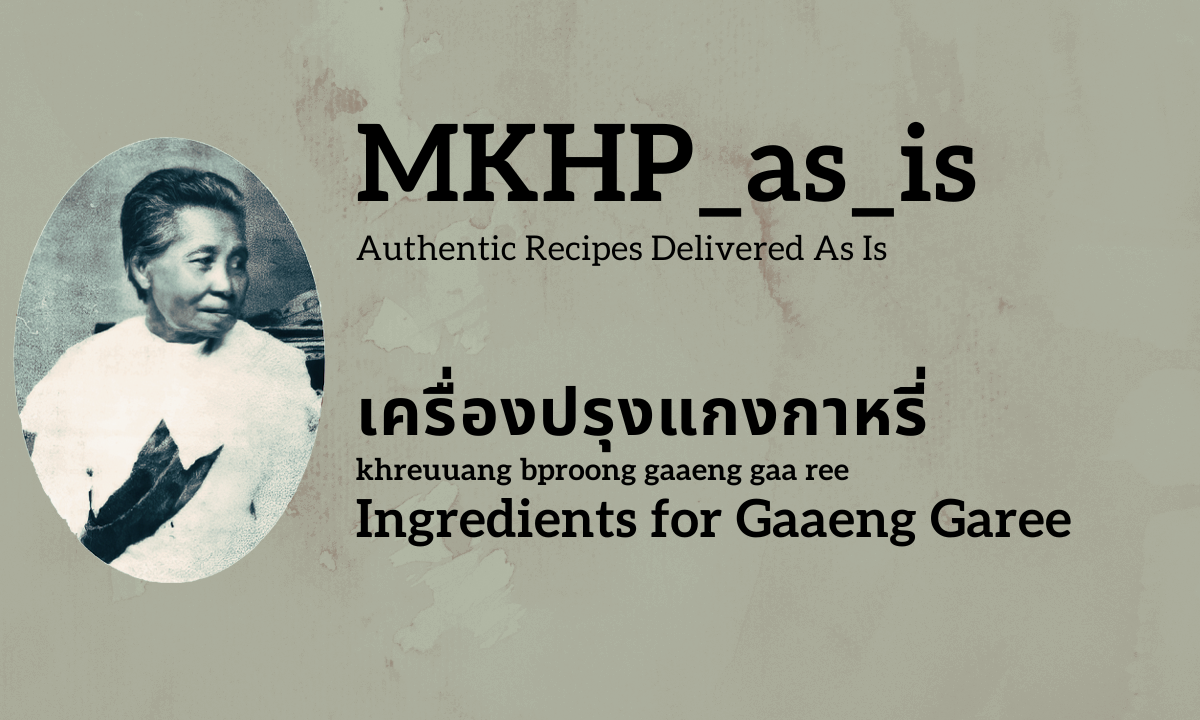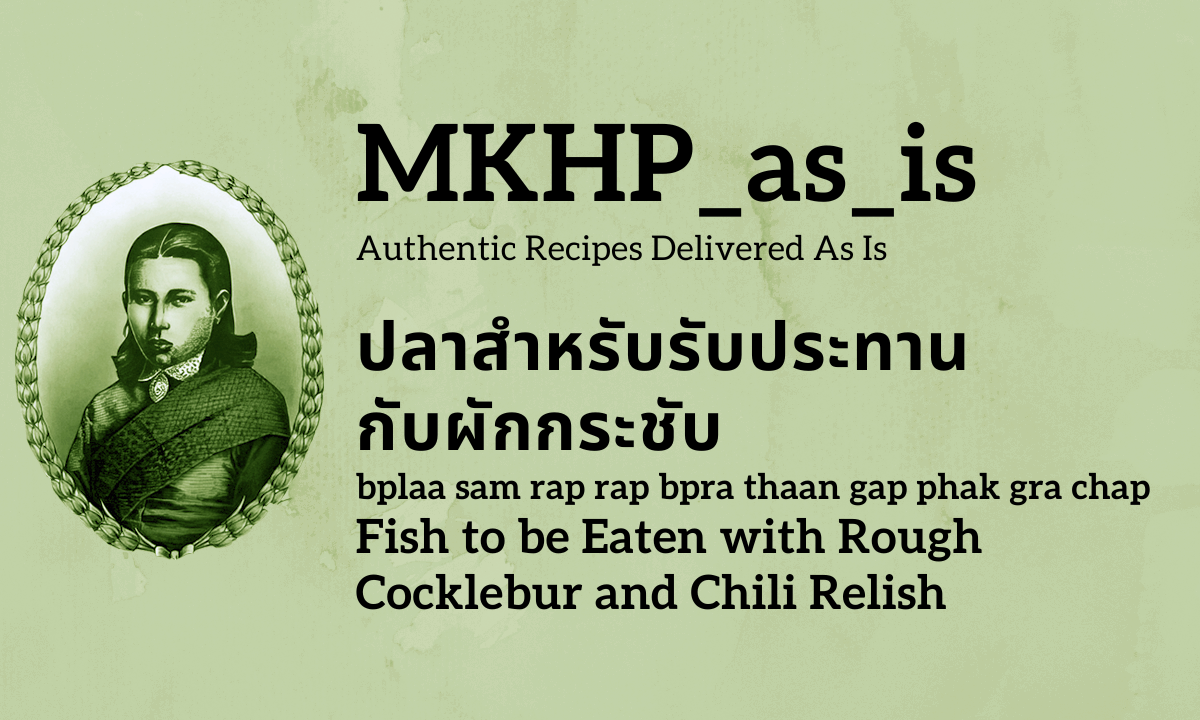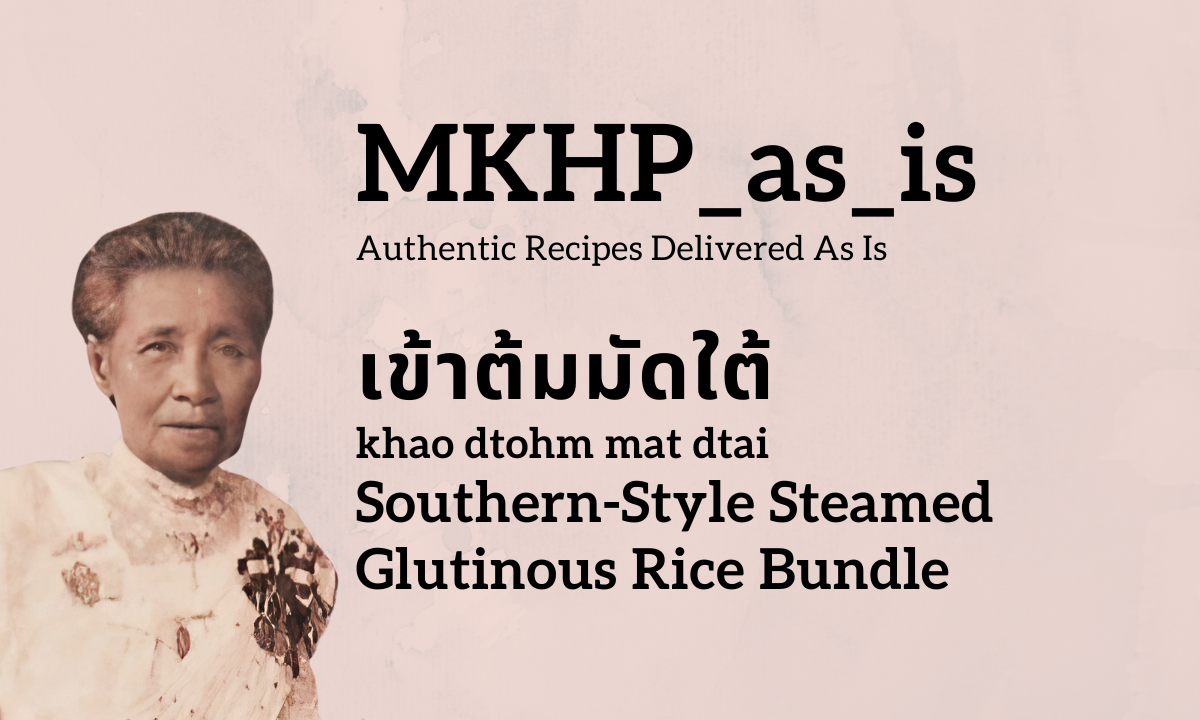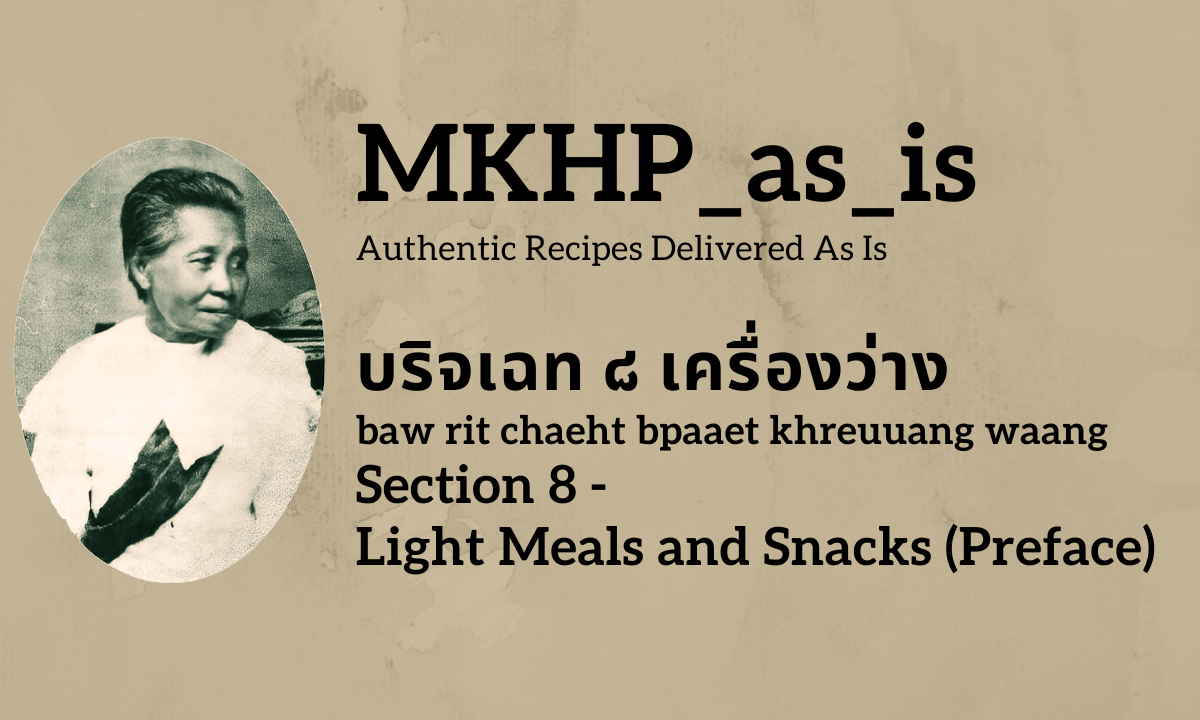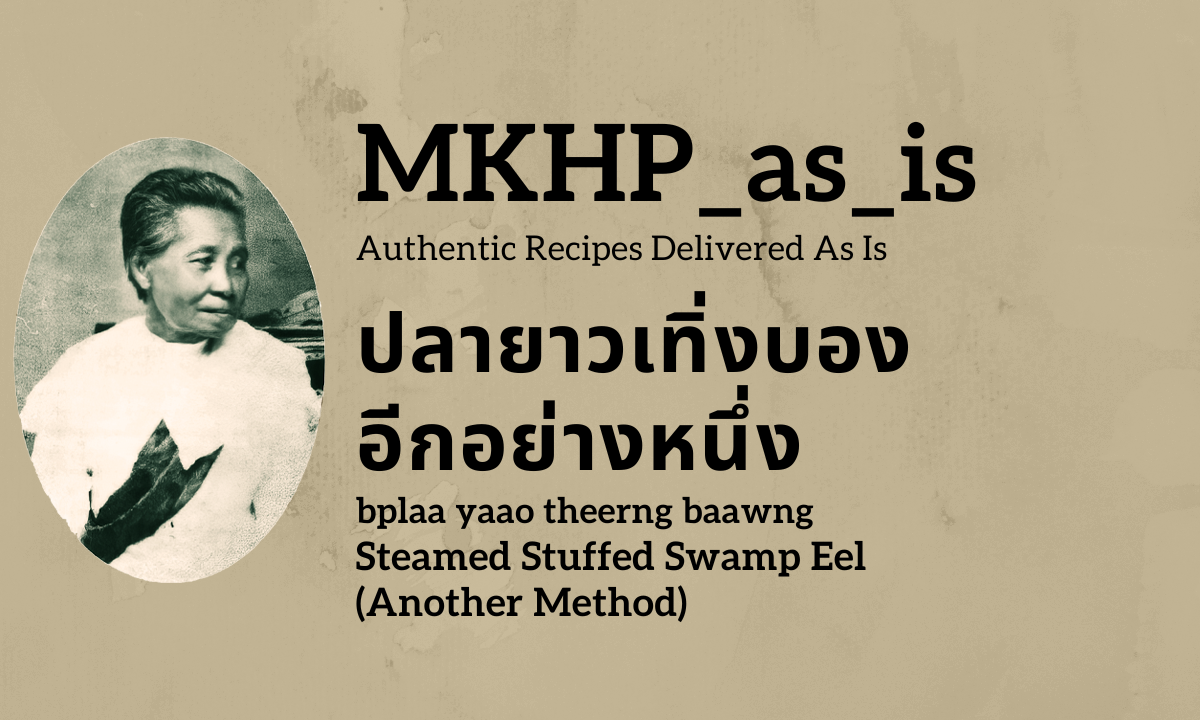What’s New on Thaifoodmaster
Recipe
September 2025
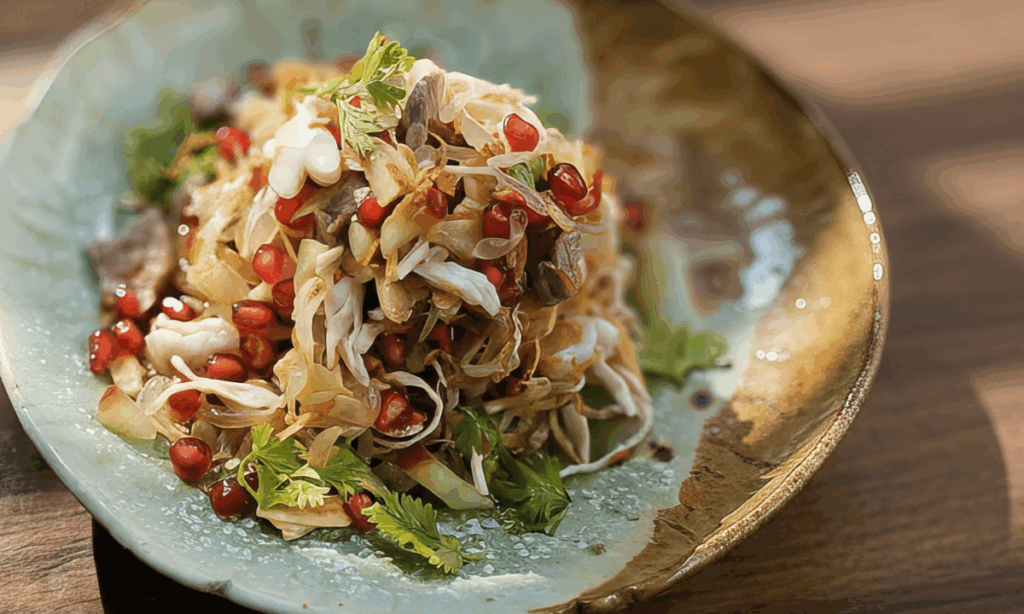
From Ms. Booree Thohnsak’s 1935 memorial cookbook, when Pathum Thani gardens provided everything within walking distance. The same afternoon light that made her pomegranate seeds glow like rubies will illuminate yours too.
Article
September 2025

Masterclass
August 2025
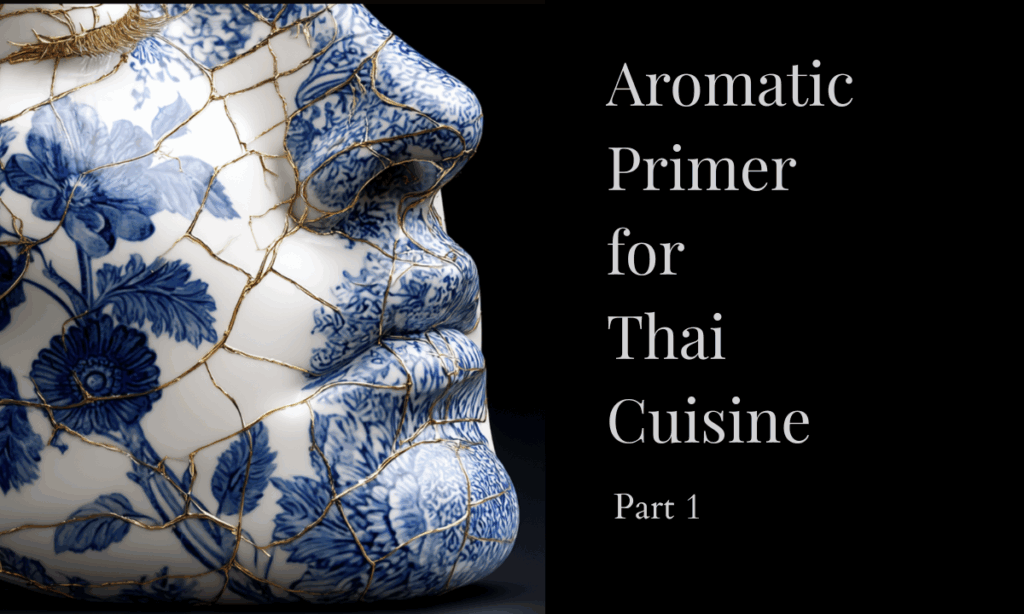
Recipe
Article
August 2025
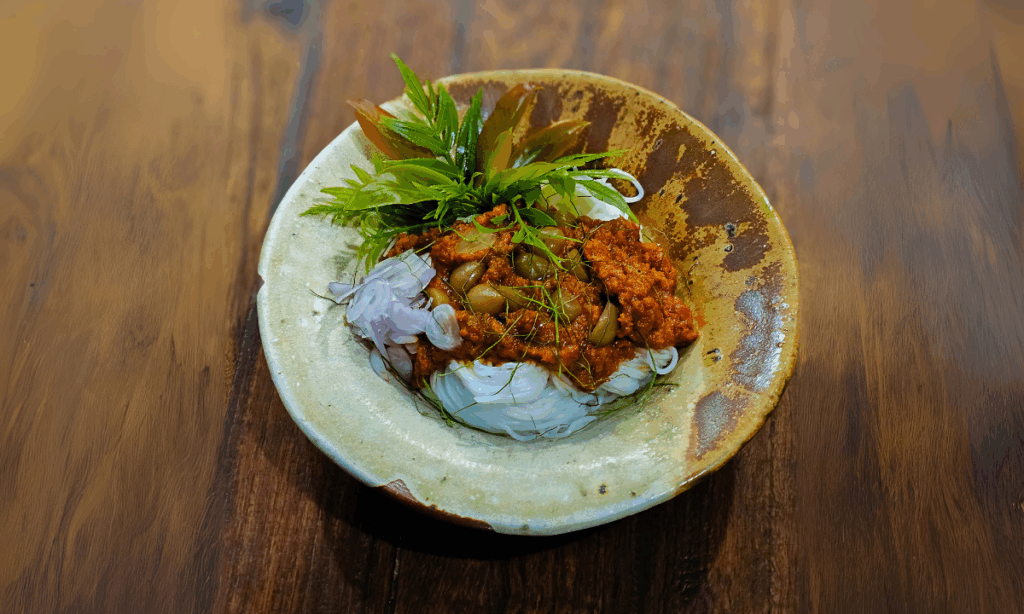
Recipe
Article
August 2025
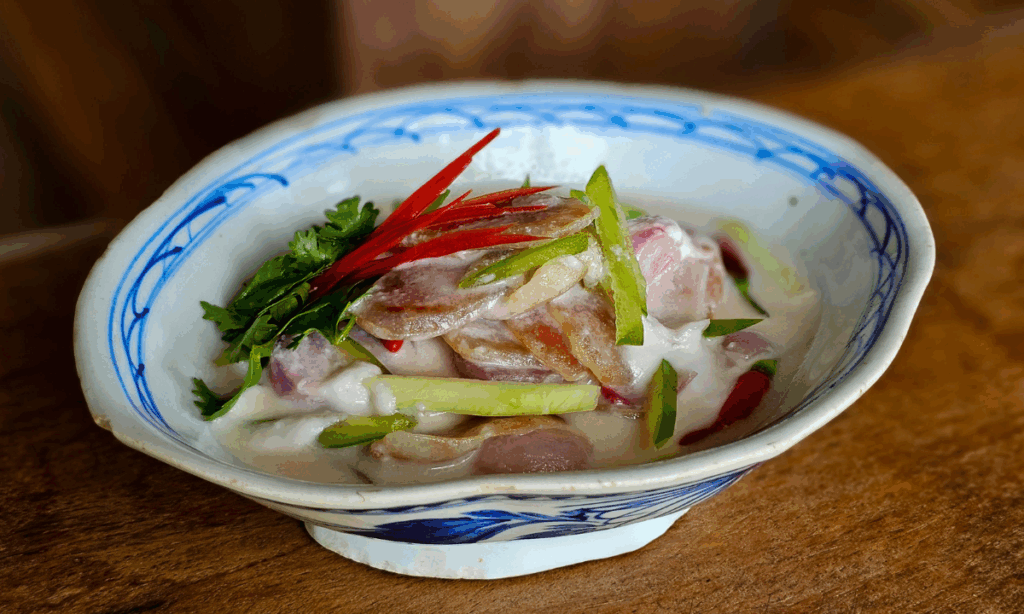
Recipe
Article
August 2025
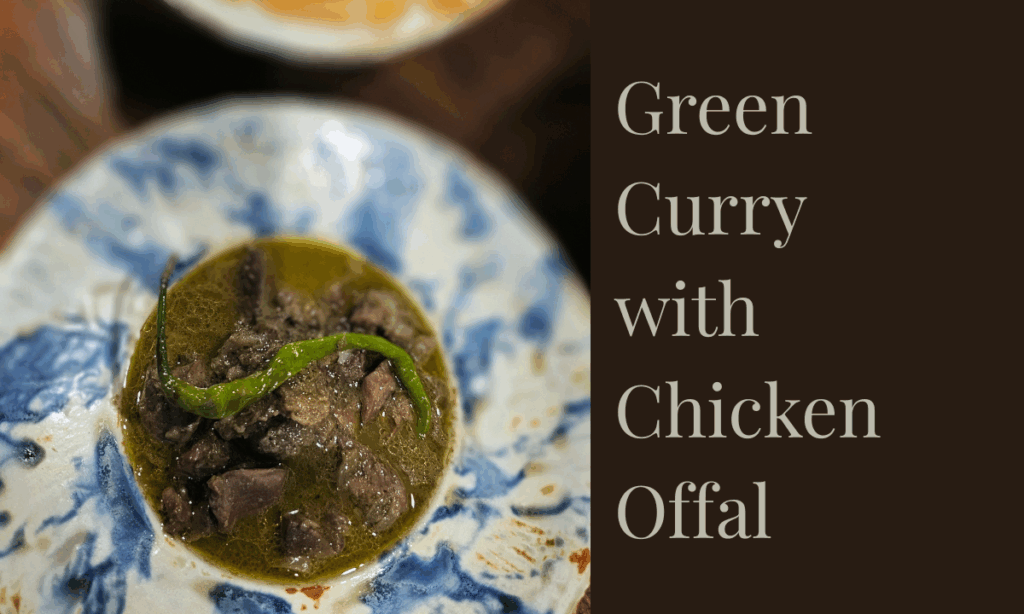
Recipe
Article
August 2025
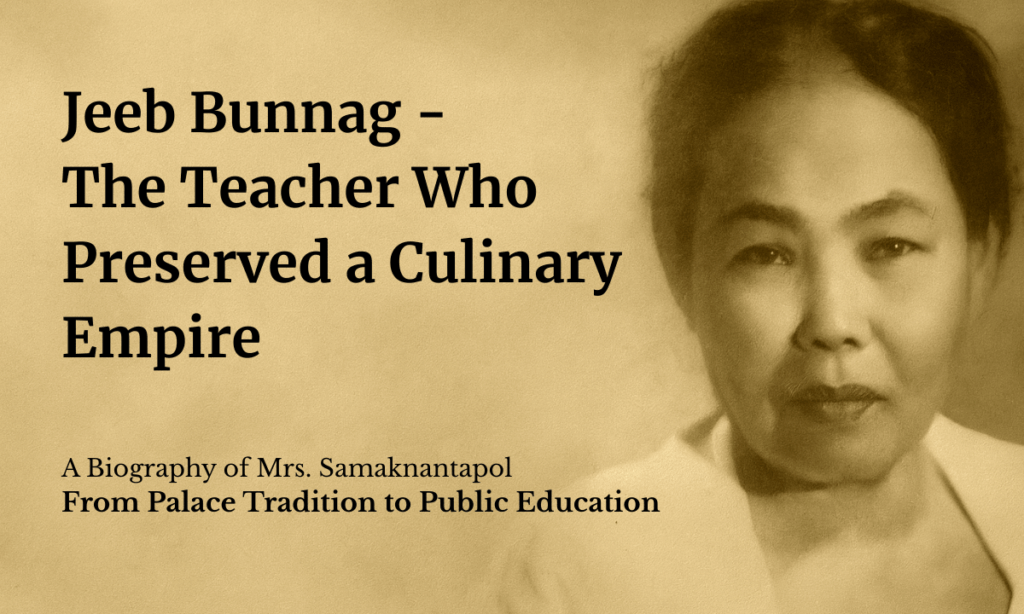
Her 1933 work Samrub Raawp Bpee (สำรับรอบปี) remains an unparalleled record: 365 complete Samrub, old style Siamese meal sets, arranged with precision, reflecting daily rhythms of eating that were already disappearing from common practice. Through her work, we can study not only individual dishes but also the organization of meals and the cultural reasoning that guided them.
As someone who follows her teaching, I approach this story with both historical and practical attention. Her writing has informed my own study of Thai cuisine, and years of cooking from her instructions have shown me the clarity and discipline of her teaching. This account presents her life within its contexts—family, education, print culture, and the evolving society of twentieth-century Siam—while also acknowledging how her work continues to guide readers today.
Recipe
Article
August 2025
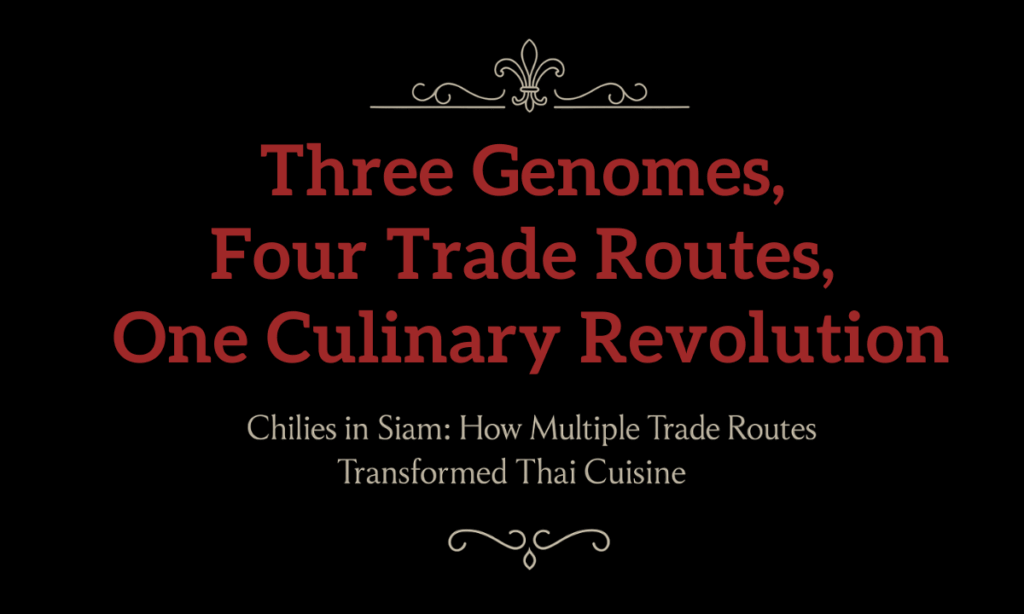
For centuries, that story went like this: Portuguese traders brought chilies to Southeast Asia in the early 1500s, spreading them from colonial centers in Goa and Malacca throughout the region. Most Southeast Asian societies incorporated chilies within 100-200 years – a remarkably rapid transformation that fundamentally altered how billions of people eat.
This narrative is true, but incomplete. New genetic evidence reveals that chilies reached Southeast Asia through multiple networks operating simultaneously: Portuguese merchants, yes, but also Islamic maritime traders, Chinese overland routes, and Indian Ocean merchant communities. Rather than following a single European pathway, chilies arrived through interconnected global trading systems that had been operating for centuries.
The story of how Siam got its fire reveals something profound about how cultural exchange actually worked in the early modern world – and how modern research is overturning colonial-era assumptions about who controlled global trade.
Continue to MKHP_as_is archives
Recipe
Article
February 2024

Accompanying the eggplant are roasted shallots and garnet-blushed grilled tomatoes. The grilled tomatoes not only add natural sweetness and brightness to the dish, but also contribute to its visual charm via their muted orangey reds. This color palette complements the eggplant’s earthy, slightly sweet taste, represented through rich, velvety white-green hues. The interplay of colors in the dish mirror the complexity of its flavors.
The minced shrimp meat introduces a briny sweetness and a contrasting texture. The relish is seasoned to a sour-sweet leading salty to follow flavor profile, enhancing the smoky sweetness imparted by the grilled ingredients and creating a palette of flavor and color that is as attractive as it is delicious.
Masterclass
January 2024

Recipe
Masterclass
January 2024

Often, the small catch comprised tiny or bony animals not suitable for grilling or frying, like birds. To make the most of this catch, the animals, after cleaning, were minced: flesh, bones and all. This approach not only maximized the use of available resources but also supplemented the diet with essential micronutrients like calcium, phosphorus and vitamins. In terms of flavor, this practice of mincing whole small animals introduced essential fats and compounds that imbued the dish with a wild, somewhat gamey flavor.
In this article, we will explore the origins and evolution of this, resources-friendly, minced meat style of curry making in Thailand. We’ll learn about historic recipes using dove, fish and other small catch, tracing this technique from the early 20th century to contemporary interpretations. Along the way, we’ll compare ingredients and methods, discovering how economic necessity and agricultural lifestyle shaped the country’s unique culinary identity. Join us as we peek into Thailand’s ingenious cuisine through the lens of these rustic, flavorsome curries.
Recipe
Article
January 2024

Recipe
Article
January 2024

Often, the small catch comprised tiny or bony animals not suitable for grilling or frying, like birds. To make the most of this catch, the animals, after cleaning, were minced: flesh, bones and all. This approach not only maximized the use of available resources but also supplemented the diet with essential micronutrients like calcium, phosphorus and vitamins. In terms of flavor, this practice of mincing whole small animals introduced essential fats and compounds that imbued the dish with a wild, somewhat gamey flavor.
In this article, we will explore the origins and evolution of this, resources-friendly, minced meat style of curry making in Thailand. We’ll learn about historic recipes using dove, fish and other small catch, tracing this technique from the early 20th century to contemporary interpretations. Along the way, we’ll compare ingredients and methods, discovering how economic necessity and agricultural lifestyle shaped the country’s unique culinary identity. Join us as we peek into Thailand’s ingenious cuisine through the lens of these rustic, flavorsome curries.
Recipe
Article
January 2024

Unlike spicy gaaeng phet (แกงเผ็ด) curries, which typically deploy dried chilies in the paste, Sarama curry contains fresh chilies. A mix of both red and yellow chili varieties are utilized, fusing the vibrant, fruity piquancy of the fresh chilies with the warm, earthy aromas of the spices. The red chilies contribute a ripe tropical fruitiness while the yellow offer citrusy and floral notes, creating a light yet layered curry with nuanced heat and depth of flavor.
Recipe
Article
December 2023

Conversely, Muslim-influenced curries, such as massaman curry, prioritize spices over chilies. Spices like cardamom, nutmeg and mace take center stage, while the chilies provide subtle background heat rather than being the primary flavor. In these curries, the focus is on the rich, warm and complex aromas created by the blend of spices, which is a defining characteristic of many Muslim dishes.
Moreover, Siamese cuisine favors using rehydrated dried chilies in curries for their depth; this depth is highly appreciated, along with the complexity, and comparatively milder heat of the rehydrated dried chilies. As well, the harsh grassy notes of fresh chilies are not favored; they’re referred to in Thai as “green rank” or “men khiaao (เหม็นเขียว)”. Muslim curries often use fresh green chilies, tempering their vibrant, grassy taste with dry spices and thus shifting the flavor from bright and fresh to more subdued and earthy tones, resulting in a dish that is perceived to be layered, despite the burst of fresh chilies.
Recipe
Masterclass
December 2023

To address this contradiction and preserve the dynamism of freshness while introducing complexity, we delve into advanced flavor layering techniques. These techniques are key to crafting a multidimensional flavor profile that captures the essence of nature and freshness. Our masterclass explores these methods in detail, introducing the innovative concept of animating flavor to ensure a dynamic, complex taste experience.
This exploration into Thai green curry extends beyond the kitchen, intertwining culinary techniques with historical and cultural insights. We examine the evolution of green curry, as well as its diverse influences, including its connection to Muslim cuisine, and its symbolism in the Siamese culinary tradition.
Join us for a sophisticated and enlightening session that is more than just a guide to preparing green curry. This masterclass is an immersive experience into the historical, cultural and gastronomical context of the dish. It is a tribute to the multifaceted nature of Thai green curry, in which participants will engage in the story behind every spicy, aromatic bite.
Recipe
Article
November 2023

Set against a backdrop of aromatics, the crumbled essence of cured duck egg yolks glow in a delicate orange-gold shade, evoking a shimmering sunlit dawn. The cured yolks bestow a rich, briny base that acquires even deeper undertones when seasoned with fish sauce and sugar. This base takes on a luxuriously silky texture, reminiscent of a finely whipped mousse, when mixed with juices of lime and kaffir lime, which also give the mix a crisp, clean citrusy finish.
Recipe
Article
November 2023
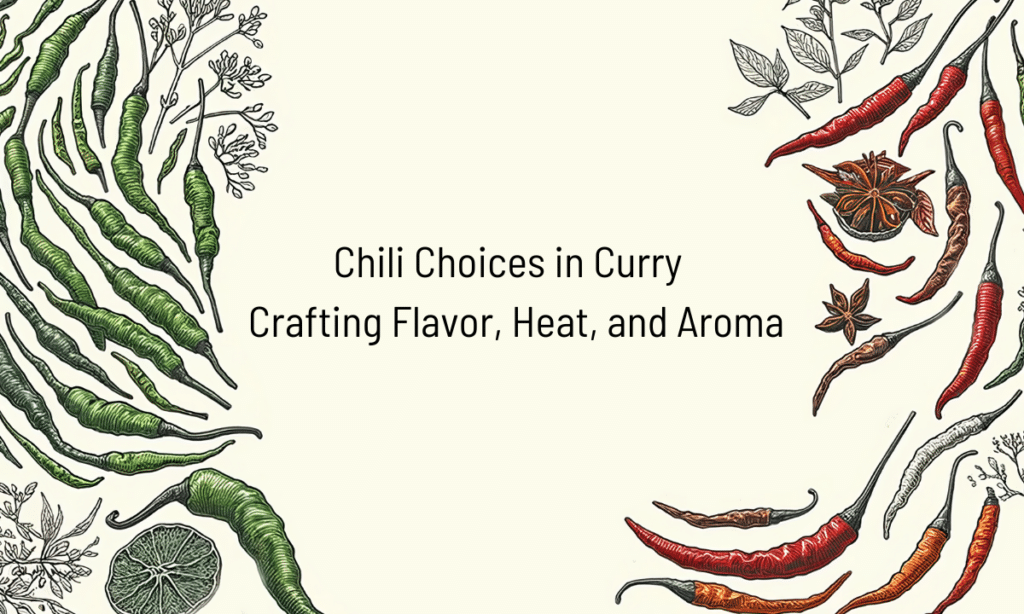
Recipe
Article
November 2023

Khanom khaang khaao (ขนมค้างคาว) is a traditional Siamese fried, triangular-shaped dumpling with obvious Chinese origins. Its earliest recorded recipe can be traced back to Jao Khraawk Thaawng Yuu (เจ้าครอกทองอยู่), a distinguished aristocrat from the royal court of Ayutthaya. Historical records indicate that, from the early days of the Rattanakosin era, her recipe was a favored snack within the Siamese royal court.
These dumplings are shaped like triangles and, according to some, resemble bats: For this reason, they are called khanom khaang khaao (ขนมค้างคาว) – ‘the bat’s treat’. The dumpling’s dough is made from rice and mung bean flours; its filling is prepared by combining grated coconut and shrimp meat, which are cooked together into a dense, flavorful mixture that brings out the nutty-sweet taste of the grated coconut and the savory-sweet flavors of the shrimp. Kaffir lime leaves, sliced into hair-thin juliennes, add a hint of citrus.
Recipe
Article
October 2023

Recipe
Article
October 2023

In this delicious seasoned rice recipe from the kitchens of the daughter of King Chulalongkorn, Princess Yaovabha Bongsanid (พระเจ้าบรมวงศ์เธอ พระองค์เจ้าเยาวภาพงศ์สนิท) (1884-1934), the Princess uses a variety of common preserved and inexpensive ingredients, clearly drawing inspiration from the cuisine of the Central Plains with nods to the rural and coastal living atmosphere.
Recipe
Article
October 2023

In addition, it is challenging to create a curry that is luxuriously creamy, yet light and not too greasy; where the crab’s delicate natural sweetness surfaces as a pleasant sea breeze, levitating above the pitfalls of being too fishy or overly sweetened. Another hurdle is achieving the precise color – produced by red chilies, golden turmeric and peppercorns – that reflects the culinary traditions of southern seashore fishing communities. I like mine set to about a 70:30 ratio of yellow to red and, if using black peppercorns, with a deep brown undertone.
Recipe
Article
September 2023

However, despite its intricate composition, the relish adheres to the same foundational culinary principles of other shrimp paste (kapi) chili relishes. Here, though, the savoriness is strengthened with smoke-dried fish, grilled shrimp and pork fat crackling; and the relish is seasoned to a citrus-infused, fruity, sour-sweet leading and salty to follow flavor profile, to which numerous sour and sour-sweet elements are mixed in – akin to a deep-rooted tree extending its branches to bear colorful fruits that shine in varying shades of a tartness.
Masterclass
September 2023

Recipe
Article
September 2023

For example, in her boat-embarking chili relish (น้ำพริกลงเรือ; naam phrik lohng reuua), a relish still enjoyed today, the Princess pairs fermented shrimp paste chili relish with sweet pork, crispy fried fish, salted duck eggs and hairy-fruited eggplant (maeuk) (มะอึก). Another example is her gaaeng ran juaan (แกงรัญจวน) – the Princess prepares a vibrant spicy and sour soup, fragrant with the aroma of Thai basil, from the leftovers of a stir-fried beef dish and fermented shrimp paste chili relish, which she cooked together with lemongrass, shallots and garlic.
Mom Chao Sai Ladawan’s recipes, many already recreated here at Thaifoodmaster, were recorded by Princess Sadap Ladawan (เจ้าจอมหม่อมราชวงศ์สดับลดาวัลย์), a key figure in the Palace’s culinary affairs, and subsequently compiled and published by Suan Sunandha Rajabhat University in a volume dedicated to seasoned rice dishes and chili relishes.
In this dish called khaao graawp (ข้าวกรอบ), or “crispy rice” the Princess seasons cooked jasmine rice with chili jam, and adds four fried components, each highlighting a different element of the crispiness indicated by the dish’s name.
Interview and Video
September 2023
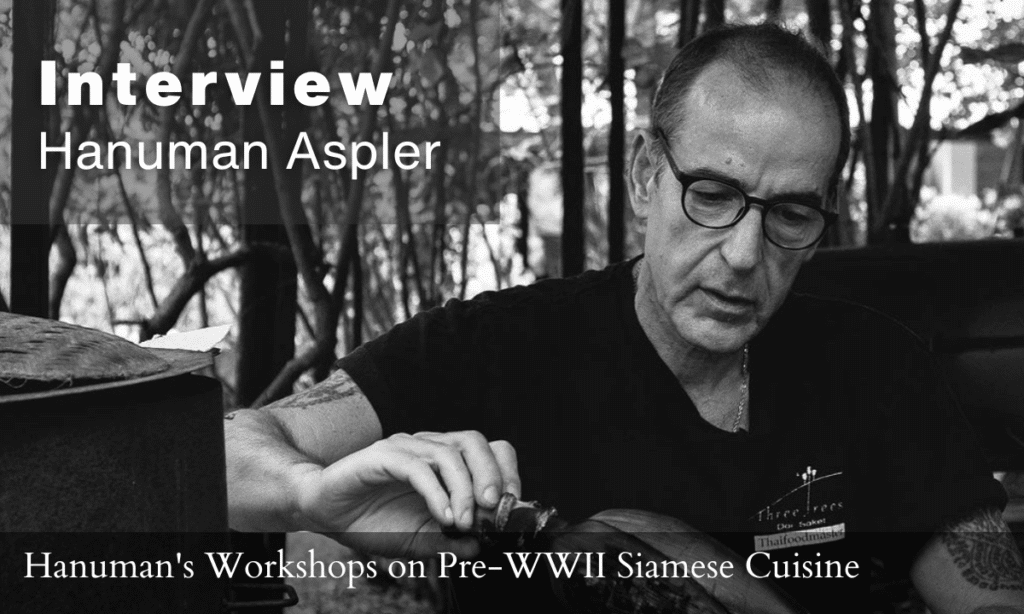
Interview
August 2023
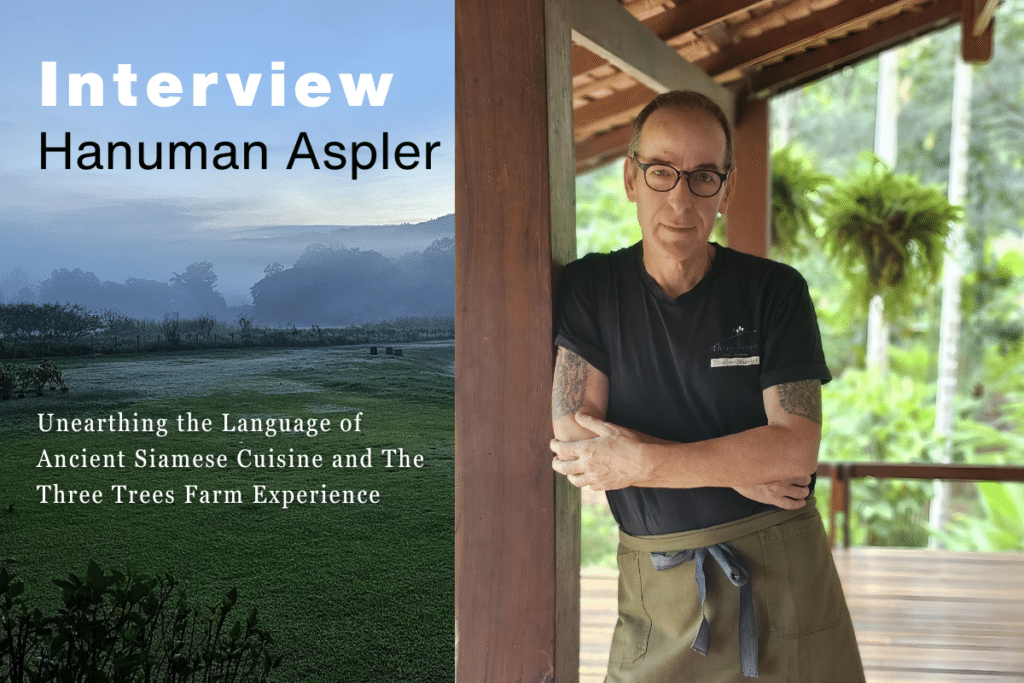
Recipe
Article
August 2023
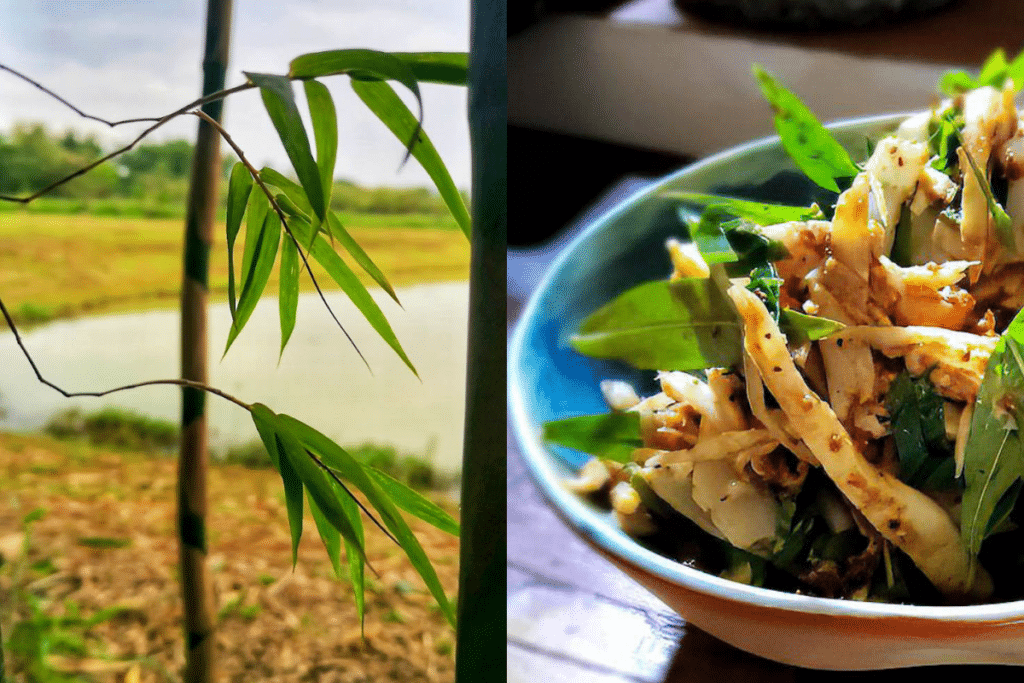
The dressing for this salad is prepared by frying a paste in pork lard or cooking oil; the paste includes roasted dried bird’s eye chilis, roasted garlic, powdered soybean cake and salt and, occasionally, roasted shallots or a small piece of fresh turmeric are incorporated. This mixture bestows a harmonious blend of salty-spicy, rich, and nutty undertones upon the salad, complemented by a subtle yeasty essence.
Recipe
Article
August 2023

The naam ngiaao broth is served over fermented rice noodles and features minced pork, and braised baby back pork ribs with their tender meat clinging to the bone. As well, there are succulent, slow-cooked whole chicken feet, and cubes of slightly bouncy, mauve-hued chicken blood cakes. Served alongside the soup are various toppings, which can include shredded cabbage, bean sprouts, chopped coriander leaves, and spring onions, while dark red chili oil and glossy, charred-fried dried bird’s eye chilies offer a fiery intensity dialed up to your preferred spiciness. In addition, I like to add wok-smoked sour cherry tomatoes and broom-like, crispy-fried dried cotton tree pollen for a surprising textural contrast.
Though the dish is often described as “Shan style”, the word ‘ngiao’ was a derogatory expression for the Shan people. As the disparaging – and outdated – label suggests, the recipe might reflect societal biases and prejudices; thus, at least from the culinary perspective, the ‘ngiao’ in the name of the dish may simply be a nod to the flavors or ingredients favored by The Shan, rather than a claim of authenticity – which could also explain why the dish is based on a Siamese curry paste.
Recipe
Article
August 2023

Recipe
Article
August 2023

Massaman curry typically presents as a deep, rich dish. Its unique flavor profile is derived predominantly from a range of dry spices that point to its Persian-inspired roots in Siamese cuisine, along with a curry paste that exudes a sense of freshness. The dried chilis are roasted to deepen their color; the rest of the ingredients, such as the shallots, garlic and dry spices, are roasted too, individually, before being pounded into the paste. Conversely, the gaaeng phet (แกงเผ็ด) curry integrates dry spices more sparingly and is known for flavor qualities that are based on a phrik khing (พริกขิง) paste made of fresh aromatics and a basil herbal identity.
Recipe
Article
July 2023

Miang sot is a fermented leaves dish that appeared in a cookbook published in honor of Thao Suphatigaanapakdee (also known as Prik Sirisamphan) (ท้าวสุภัติการภักดี (ปริก ศิริสัมพันธ์)), in 1928. Titled Gap Khaao Thai (กับข้าวไทย), the book features a collection of recipes that were once prepared and served to King Chulalongkorn Rama V. The author, Sohmboon Sirisamphan (เถ้าแก่ สมบุญ ศิริสัมพันธ์) a respected elder (known as thao gaae (เถ้าแก่) in Thai), was a distinguished businessman of Chinese origins.
The dish is composed of fermented tea leaves; it is perhaps the closest tea leaves wrap to the ‘miang’ style introduced to the Siamese court by Princess Dara Rasami in the late 1800s. The dish gives us a glimpse of flavor of what her household, which participated in the informal marketplace events within the palace, might have to offer.
The popularity of miang in Siamese cuisine is tied to the history of two kingdoms, Siam and Lanna, and the life of one princess, Princess Dara Rasami. The daughter of King Inthawichayanon of Chiang Mai and the fifth consort of King Chulalongkorn, the princess was selected at the age of thirteen, in 1886, to serve as a consort to King Chulalongkorn in the Inner Palace; the decision was shaped by both political strategy and personal transition. At the time, Siam was consolidating its power and extending its influence over neighboring regions, including Lanna. As the ruler of Chiang Mai, Princess Dara Rasami’s father, Intawichayanon, viewed the move as a strategic alliance. In return, King Chulalongkorn presented him with the medal of the Order of Chula Chom Klao, which is the Siamese equivalent of a knighthood.
Recipe
Article
July 2023

In Thai cuisine, it is common practice to sprinkle grated coconut over glowing charcoal while grilling. The heat-induced combustion of aromatic fats within the coconut introduces an additional dimension of sweet, smoky richness to the dish. Meanwhile, the charring of the edges of the meat catalyzes the caramelization of its natural sugars, yielding a delightful sweetness that further enhances the smoky undertones of the meat.
Recipe
Article
July 2023

The duck meat is prepared separately and slow-braised in coconut cream before being cooked in the curry. This slow-braising process allows the coconut cream and duck’s fattiness to melt together, resulting in moist and flavorful meat with a hint of sweetness. The curry itself is seasoned to a salty and slightly sweet flavor profile.
Recipe
Article
June 2023

The name of this vintage dish – Faux Frog Salad – could be a reflection of the swinging social norms in Siam during the roaring twenties, a period of significant social change; as the country sought to navigate the challenges of modernization, Siamese society was shifting its dietary preferences away from the frog, once a common, versatile and popular ingredient. Thus, through the desire for distinction, chicken, an ingredient often compared to the taste of everything, was preferable to frog.
Recipe
Article
June 2023

Recipe
Masterclass
June 2023
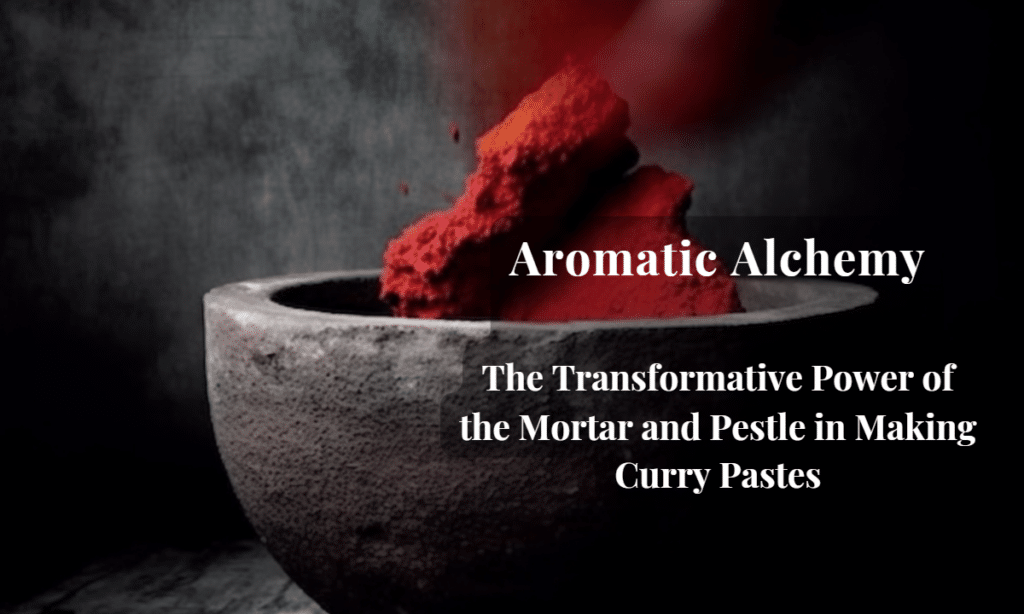
Join me as I uncover the science behind the aromatic modifications and the intricate interactions that happen inside the mortar. I aim to provide a comprehensive understanding of the complex world of pounded pastes, from the release of oils and essences to the impact of moisture and the effect of heat, oxidation and the enzymatic reactions that bring forth the paste’s unique flavor identity.
Recipe
Article
May 2023

Recipe
Article
May 2023

Recipe
Article
May 2023

Recipe
Masterclass
May 2023
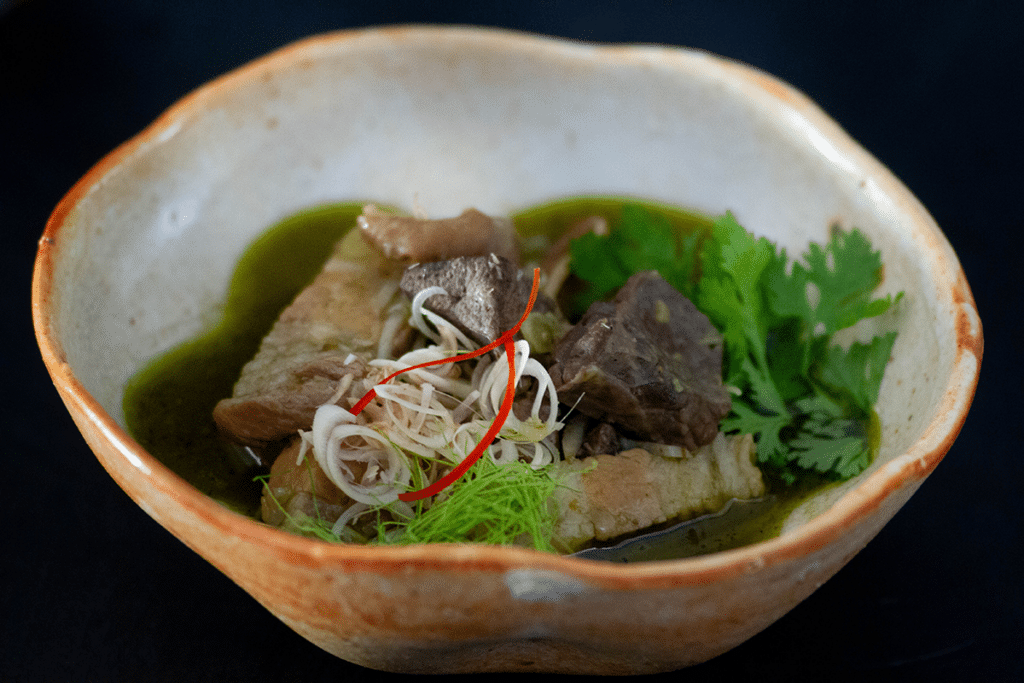
Recipe
Masterclass
April 2023

Gaaeng yaa (แกงยา), which translates to “medicinal curry”, is a thick water-based dish that was advised in treating a specific group of conditions collectively referred to as grasai sickness (โรคกษัย). Its broth is based on a sharp and distinctive curry paste; drawing its profound savoriness from salted fish, the dish is thickened with grilled fish meat, while wild pepper leaf gives it a long-lasting peppery-herbal aftertaste.
In this Masterclass, we explore gaaeng yaa culinary and medicinal blending theories as reflected in historic medical documents inscribed in the early 1800s but reflecting nearly five centuries of knowledge and certainly preceding the earliest Siamese cookbooks. As well, we unearth centuries-old recipes and classical methods for combining ingredients for both culinary and medicinal purposes.
In the case of gaaeng yaa, we are offered a rare and fascinating opportunity to examine dishes through manuscripts that predate the earliest Siamese cookbooks by almost a century.
Recipe
Article
April 2023

It is in this context that yam jin gai (ยำจิ้นไก่) holds a special significance. Once a delicacy served only on special occasions, this soup-like salad has come to symbolize the enduring bond between the people of Northern Thailand and their ancestral spirits. Families pay homage to their ancestors with offerings of food, fostering a sense of unity and connection that transcends mortality and even the present; although the dish is included on the menus of many restaurants, its roots remain grounded in the spiritual landscape of the northern forests.
Recipe
Article
April 2023

Thaifoodmaster is excited to present a distinctive curry recipe called gaaeng jao dtao (แกงเจ้าเต่า), a curry with a rustic flair, a neoclassical period dish originating in the kitchen of a noble family. Gaaeng jao dtao (แกงเจ้าเต่า), a sour curry of catfish featuring young tamarind leaves, fingerroot and lemon basil, was created by Lady Gleep Mahithaawn (ท่านผู้หญิงกลีบ มหิธาวรรณ) (1876-1961) and appeared in her 1949 book Recipes for Teaching Children and Grandchildren (หนังสือกับข้าวสอนลูกหลาน).
Gaaeng jao dtao (แกงเจ้าเต่า) is a dish that showcases Lady Gleep’s appreciation for vernacular cuisine while highlighting her classical training. Unlike other aristocratic cooks, Lady Gleep was able to combine two staple dishes into one: gaaeng jao dtao (แกงเจ้าเต่า) is a unique merger of a sour curry and a water-based gaaeng aawm curry (แกงอ่อม).
Recipe
Article
March 2023

It is unclear why Mrs. Paan named this citrusy, sour, and salty seasoned rice dish after Lord Shiva, calling it “Phra Suli (พระศุลี ; phra soolee)”. Yet I believe the name of the dish is meant to evoke the elegance and delicacy of the deity rather than to reference cultural authenticity or tradition.
Recipe
Article
March 2023

The rich, dark color of the smoked duck’s skin is visually striking and appetizing, evoking a sense of indulgence and luxury. The smoky flavors that permeate the meat reflect our deep connection to primal cooking techniques, a fascinating juxtaposition to the refined presentation of the dish. When the smoked duck is sliced, its succulent pink meat is revealed, surrounding the golden filling of chestnuts and mackerel.
Recipe
Article
March 2023

Recipe
Article
March 2023

Recipe
Article
March 2023

In Thai, the phrase mee naam baan raat thuut refers to a rice vermicelli noodle soup in the style of the Ambassador’s house. The dish was not new when it appeared in the 1956 book Snacks, Tea Nibbles, Hors D’oeuvres and Drinking Food (ตำราอาหารว่าง – เครื่องน้ำชา และ เครื่องเคี้ยว หรือ กับแกล้ม) by Jeeb Bunnag (จีบ บุนนาค), as noodle dishes were often the preferred ingredient for light meals or snacks. In Grandparents Recipes: 100 Years Old Recipes (จานอร่อยจากปู่ย่า สูตรโบราณ 100 ปี), a volume printed in 2014 that highlights recipes from the kitchens of fifteen prominent families, a similar version of the dish is referred to as mee naam baan bpaak naai leert (หมี่น้ำบ้านปาร์คนายเลิศ) and is associated with Nai Lert.
Recipe
Article
February 2023

Recipe
Article
February 2023

Recipe
Article
January 2023

Recipe
Article
January 2023

From the Siamese perspective, the incorporation of fruits in culinary preparations was viewed as a luxurious indulgence, as many fruits commonly available today were once difficult to obtain. Thus the pairing of an extravagant ingredient – such as fruit – with an equally opulent and exclusive delicacy like roasted duck resulted in a dish fit for royalty.
Recipe
Article
January 2023

Recipe
Masterclass
January 2023
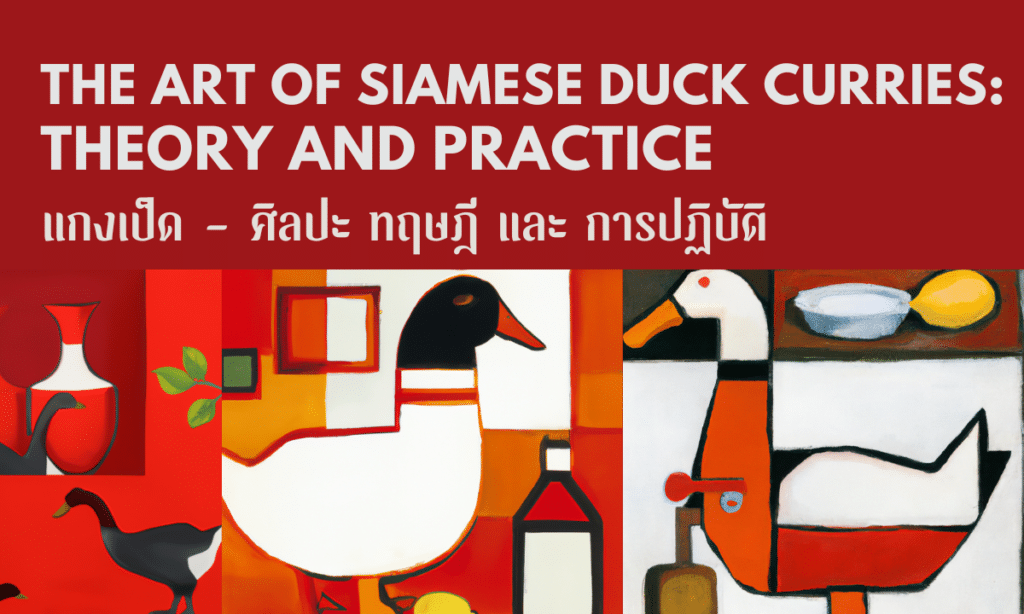
This masterclass presents a unique opportunity to delve into the taste awareness and culinary trends of a bygone era, and gain a deeper understanding and appreciation of traditional Siamese duck curries. By studying recipes found in some of the most reputable and trustworthy Siamese cookbooks from the early 1900s and by drawing on the teachings and personal cooking style of the authors – some of the greatest culinary masters of their time – participants will gain insight into the history and flavors of these dishes. As the culinary world continues to evolve, it is important for anyone who cooks Thai food to be attentive to the broader, more nuanced aromatic patterns conveyed by these recipes, so they may cook and imbue these dishes with a sense of longing for what their creators had envisioned.
Recipe
Article
December 2022

In the 1935 book Sai Yaowapa (ตำรับสายเยาวภา), Princess Yaovabha Bongsanid (พระเจ้าบรมวงศ์เธอ พระองค์เจ้าเยาวภาพงศ์สนิท) reflects the Anglo-Indian style gaaeng garee in her composition of bitter orange-fragrant beef gaaeng garee, which she serves in individual bowls made of fried potatoes, per a recipe recorded by M.L. Terb Gamphu (ม.ล. เติบ กำภู) and M.R. Tuang Sanitwong (ม.ร.ว.เตื้อง สนิทวงศ์).
Recipe
Article
December 2022

Recipe
Article
December 2022

Recipe
Article
December 2022

